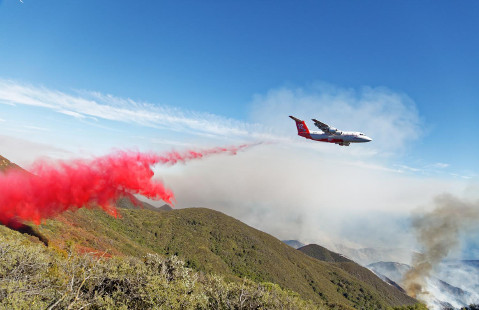Sherpa Fire Deemed Accidental
Smoking Fireplace Log Taken Outdoors Dropped Embers

The 7,474-acre Sherpa Fire — which burned for nearly a month last summer between Refugio Canyon and Vazquez Ranch near El Capitan State Beach — was caused accidentally by a Rancho La Scherpa resident, according to the Santa Barbara County Fire Department. “[The resident] was burning a log in his indoor fireplace when the wind picked up, causing smoke to fill the residence,” according to a statement released by Captain Dave Zaniboni, County Fire’s information officer. “The resident then carried the burning log to an outside water faucet, dropping hot embers on the ground, which ignited the vegetation fire.”
The 9-1-1 came in at 3:29 p.m. on June 15, 2016, rallying county crews and a Forest Service response team to Rancho La Scherpa — the official name of the fire was spelled without the “c,” but left alone to avoid confusion during response — as an aerial attack was set in motion. Overnight, sustained sundowner winds never dropped below 30 mph as gusts surged to 49. The fire spread south and east rapidly through densely vegetated and mostly roadless steep terrain, forcing the California Highway Patrol to shut down Highway 101 in both directions and Union Pacific to halt train traffic. Mandatory evacuations were called for nearby residents and more than a thousand campers at Refugio and El Capitan state beaches and two private campgrounds. Dozens of horses from various ranches were trailered to Earl Warren Showgrounds.
At its peak — and through a record-breaking heat wave — 2,178 personnel were assigned to the wildfire, including 61 hand crews and 129 engines, 14 bulldozers, 17 helicopters, and 10 airplanes. Suppression crews fully contained the blaze on July 12.
The total firefighting cost topped $16 million, and there were approximately $3 million in agricultural losses across seven farming operations on six ranches, including avocado, grape, olive, and coffee crops, about 2,800 acres of rangeland, and lots of fencing and infrastructure.
“It’s been multiple agencies and just dealing with possible lawsuits,” Zaniboni said. “That’s the reason there’s been this huge delay [in releasing the cause].”



